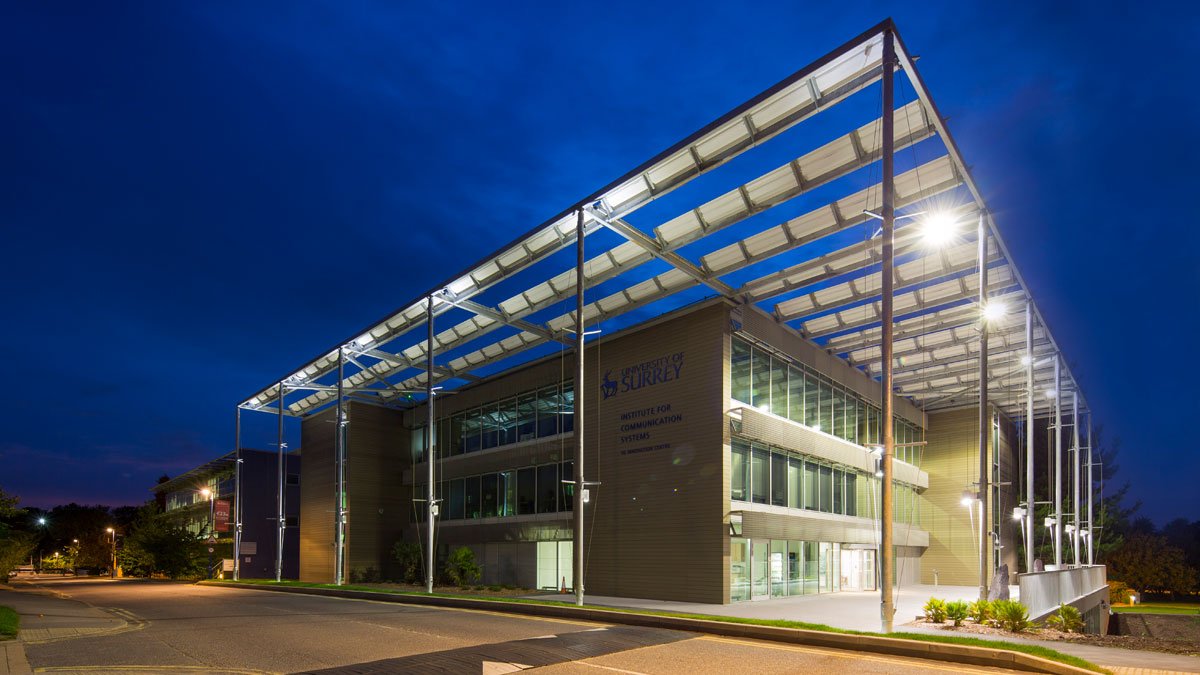University of Surrey kicks off 6G research with 6GIC launch
Research will focus on societal challenges

The University of Surrey says its research into 6G technology will be driven by a “distinctive vision” that focus on ubiquitous coverage and how cellular networks can bring together the physical and virtual worlds.
The 5G innovation Centre (5GIC) was established at the university’s Guildford campus back in 2013, allowing academics, operators, vendors to work on candidate technologies and use cases for the 5G standard.
Since then, it has established itself as one of the main centres of 5G research in Britain.
- These are the best business SIM-only deals around today
- And the best business broadband deals
- Here are the best business mobile phone deals
University of Surrey 6G
“Since its inception in 2013, the 5G Innovation Centre has epitomised the University of Surrey’s ethos to collaborate with industry on societal and industry challenges, to enable innovations that change lives,” said Professor Max Lu, President and Vice-Chancellor of the University of Surrey.
“Today, we affirm our mission on this journey to the digital future with ‘6GIC’, our vision and research strategy for the next ten years. Now is the time for the University, industry and the UK to begin the journey together towards 6G in collaboration with our international partners.”
Resources will still be made available to 5G development, but now that such networks are a commercial reality, the university has turned its attention towards the next generation of connectivity.
The first 6G networks are expected to deliver speed, capacity, and latency improvements over 5G, but this is the bare minimum expected of a new generation of mobile technology. The real advances will be the integration of intelligence and the use of new types of spectrum, such as the terahertz band. The first commercial 6G networks are expected to go live in 2030.
Sign up to the TechRadar Pro newsletter to get all the top news, opinion, features and guidance your business needs to succeed!
The 6GIC says its vision is one that supports transformative services that address major societal challenges such as climate change, pandemic control, and economic growth. There is also a desire to improve the quality and capability of networks without simply resorting to the addition of new spectrum.
A 6GIC whitepaper outlines two key research themes. The first is ‘ambient information’, a fusion of the physical and virtual worlds powered by sensors, geolocation and wireless technologies that augments human capabilities.
The second is ubiquitous coverage. With 5G seemingly solving the issues of capacity and latency for the time being, the 6GIC will work to see how intelligent surfaces and satellite technology can bring coverage to indoor environments and hard to reach areas.
“What our industry members are telling us is that the traditional approach of ever-higher data rates in ever-higher spectrum band is running out of road as a mobile service,” said Professor Rahim Tafazolli, Director of the 6GIC.
“An entirely new approach is needed that mobilises exciting new services that address the great global challenges.”
- Here are the best 5G phones around today
Steve McCaskill is TechRadar Pro's resident mobile industry expert, covering all aspects of the UK and global news, from operators to service providers and everything in between. He is a former editor of Silicon UK and journalist with over a decade's experience in the technology industry, writing about technology, in particular, telecoms, mobile and sports tech, sports, video games and media.